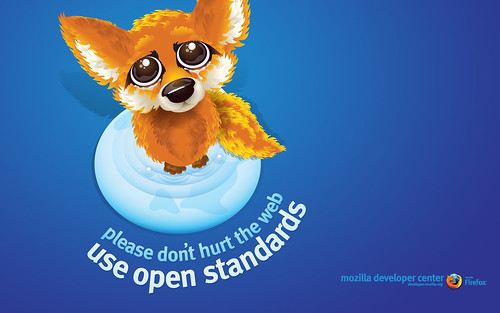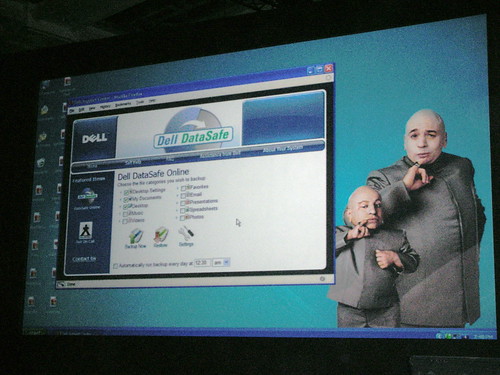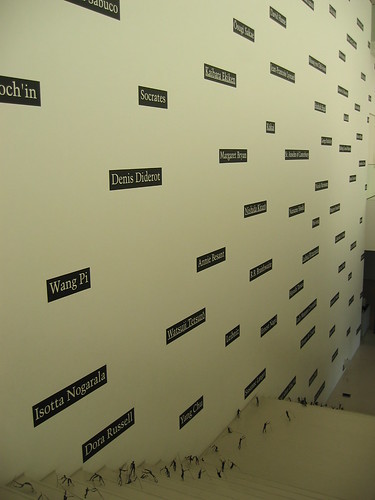Software Patent: the truth unveiled, Simon Phipps’s and Florian Mueller’s opinions
Talking about open source having a need for lobbyists I mentioned the David vs Patent Goliath fight, a ground where previously unknown lobbyists – people coming from the Economic Majority of European SMEs against software patents or no profit organizations like FFII – made their name.
 Truth or Consequences by kxlly
Truth or Consequences by kxlly
Simon Phipps joined the conversation, saying:
Something this overlooks – and that was present in the CII Directive debate – is that as more and more companies depend on open source as the bedrock of their business, they will direct their lobbyists to act on behalf of the open source communities.
I spent a great deal of time in support of lobbyists (as did my colleague Mark Webbink from Red Hat) patiently explaining to politicians and their staffs the problems with software patents as envisaged by Microsoft and the other pro-lobby members. In fact, I might even want to claim that our little informal alliance – Sun, Red Hat, Oracle, IBM and one other that prefers to remain anonymous – actually swung the interoperability argument that killed the Directive.
This is not to say we don’t need lobbyists acting on behalf of FOSS projects directly. But don’t forget that corporations that grok FOSS lend can their weight to the cause.
I took the chance to privately ask Florian Mueller – “No lobbyists as such” author and founder of the NoSoftwarePatents.com campaign – his opinion, that I fully quote.
Anyway, interoperability was a secondary theater of war for us. The simplest way to explain it is that if you have no software patents, you don’t need an interoperability privilege. There was an email exchange in the week before the final vote between a lawyer working for some or all of the companies Simon refers to, the FFII’s then-president Hartmut Pilch, and myself. Both Hartmut and I pointed out that we looked at interoperability as a minor bargaining chip, far from a priority subject.
It is true, however, that some interoperability proposals that were proposed back then as amendments caused a certain degree of discord within the pro-swpat camp, especially between IBM and Microsoft.
I have previously explained and documented in my blog certain facts about Red Hat’s role.
In a situation of political instability (back in those days, the Parliament was a “zoo” with dozens of lobbyists from both camps running around, numerous citizens emailing, faxing and phoning MEPs, etc.), anything can contribute to people’s nervousness, including some discord over a secondary issue like interoperability. But the important thing was to have that zoo, that overall instability, a large part of which was due to the political situation that had arisen from the FFII’s and my fight against the Council’s common position, including the restart initiative in the EP.
The important second-reading amendments were the 21 amendments filed by various political groups and lists of MEPs at the FFII’s initiative, and certainly not the one proposed by the companies Simon refers to and which proposal was in fact not liked by the FFII and myself at all. Claiming that a small-scale interoperability initiative made all the difference for getting the proposed directive killed is like eating a peanut after a five-course meal and believing that it was that peanut which took your hunger away because after eating the peanut you no longer felt hungry.I never claimed all of the credit for myself and shared it with the FFII in a variety of public declarations. However, I would prefer for companies with an obvious, vested interest in currying favor with the community to take reasonable positions as well.
I guess my most recent success in a policy area unrelated to patents (i.e., football broadcasting rights) gives me more credibility than I could gain from further debates on who made what contribution to the rejection of the swpat directive.

 Eiffel tower by
Eiffel tower by  Open Standard campaign by
Open Standard campaign by  Dell and Dr.Evil by
Dell and Dr.Evil by  /dev/porsche by
/dev/porsche by  Roadmap by
Roadmap by  Practical taxonomy by
Practical taxonomy by
Simon Phipps 12:53 pm on April 24, 2007 Permalink
It’s exactly the fact that Florian thought interoperability irrelevant that made it important for others to champion it! His was an all-or-nothing strategy, and in the end it was that “peanut” that saved the day according to my independent sources. I know Florian disagreed and it seems we still differ. Oh well. At least CIID was defeated (or postponed)
I’m afraid I find his response disappointing though, there was more than him and FFII in the fight. And my point (that corporations truly working with FOSS can be expected to defend it) stands, even if Florian want’s to try to dismiss it.
Roberto Galoppini 3:29 pm on April 24, 2007 Permalink
Dear Simon,
I might not refer to interoperability as irrelevant, neither I think Florian does, as results from his own words:
Being an involved activist from the very beginning I can’t share your idea that, in your own words
By the way, considering that IBM, Sun, Oracle and other important players are still working on interoperability and open standards issues, I would be glad you all to take into consideration the hidden traps in Open Document (or any other open standard).